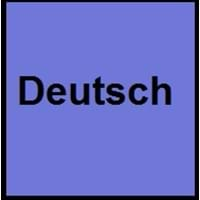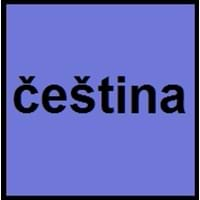Countries
Austria, Belgium, Germany, Italy, Liechtenstein, Luxembourg, Switzerland
Czech Republic, European Union
National Language
Germany
Czech Republic
Second Language
North Dakota, United States of America
Not spoken in any of the countries
Speaking Continents
Europe
Europe
Minority Language
Czech Republic, Denmark, Former Soviet Union, France, Hungary, Italy, Namibia, Poland, Romania, Slovakia, Slovenia
Austria, Croatia, Germany, Slovakia
Regulated By
Council for German Orthography
Institute of the Czech Language
Interesting Facts
- One of the large group of Indo-Germanic languages is German.
- The second most popular Germanic language spoken today behind English is German language.
- The Czech language was known as Bohemian as early at 19th century.
- In czech language, there are many words that do not contain vowels.
Similar To
Dutch, Danish, Norwegian, Swedish and English Languages
Polish, Slovak and Sorbian
Derived From
Albanian Languages
Not Available
Alphabets in
German-Alphabets.jpg#200
Czech-Alphabets.jpg#200
Writing Direction
Left-To-Right, Horizontal
Left-To-Right, Horizontal
How Are You?
Wie geht es dir?
Jak se máš?
Good Night
gute Nacht
dobrou noc
Good Evening
guten Abend
dobrý večer
Good Afternoon
guten Tag
dobré odpoledne
Good Morning
guten Morgen
dobré ráno
I Love You
Ich liebe dich
Miluji tě
Excuse Me
Entschuldigung
promiňte
Dialect 1
Swiss German
Chod
Where They Speak
Switzerland
Chodsko, Bohemia
How Many People Speak
Not Available
Dialect 2
Swabian German
Lach
Where They Speak
Germany
Czech Silesia, Hlucin, Northeast Moravia
How Many People Speak
Not Available
Dialect 3
Texas German
Moravian
Where They Speak
Texas
Czech Republic, Czech Silesia, Moravia, Slovakia
Second Language Speakers
Not Available
Native Name
Deutsch
čeština / český jazyk
Alternative Names
Deutsch, Tedesco
Bohemian, Cestina
French Name
allemand
tchèque
German Name
Deutsch
Tschechisch
Pronunciation
[ˈdɔʏtʃ]
Not Available
Origin
6th Century AD
9th Century
Language Family
Indo-European Family
Indo-European Family
Early Forms
No early forms
Proto-Czech, Old Czech
Standard Forms
German Standard German, Swiss Standard German and Austrian Standard German
Standard Czech
Signed Forms
Signed German
Czech Sign Language
Scope
Individual
Individual
ISO 639 6
deus
Not Available
Glottocode
high1287, uppe1397
czec1258
Linguasphere
52-ACB–dl & -dm
53-AAA-da
Language Type
Living
Living
Language Linguistic Typology
Subject-Object-Verb, Subject-Verb-Object
Not Available
Language Morphological Typology
Fusional, Synthetic
Fusional, Synthetic
All German and Czech Dialects
Most languages have dialects where each dialect differ from other dialect with respect to grammar and vocabulary. Here you will get to know all German and Czech dialects. Various dialects of German and Czech language differ in their pronunciations and words. Dialects of German are spoken in different German Speaking Countries whereas Czech Dialects are spoken in different Czech speaking countries. Also the number of people speaking German vs Czech Dialects varies from few thousands to many millions. Some of the German dialects include: Swiss German, Swabian German. Czech dialects include: Chod , Lach. Also learn about dialects in South American Languages and North American Languages.
German and Czech Speaking population
German and Czech speaking population is one of the factors based on which German and Czech languages can be compared. The total count of German and Czech Speaking population in percentage is also given. The percentage of people speaking German language is 1.39 % whereas the percentage of people speaking Czech language is 0.15 %. When we compare the speaking population of any two languages we get to know which of two languages is more popular. Find more details about how many people speak German and Czech on German vs Czech where you will get native speakers, speaking population in percentage and native names.
German and Czech Language Codes
German and Czech language codes are used in those applications where using language names are tedious. German and Czech Language Codes include all the international language codes, glottocodes and linguasphere.





